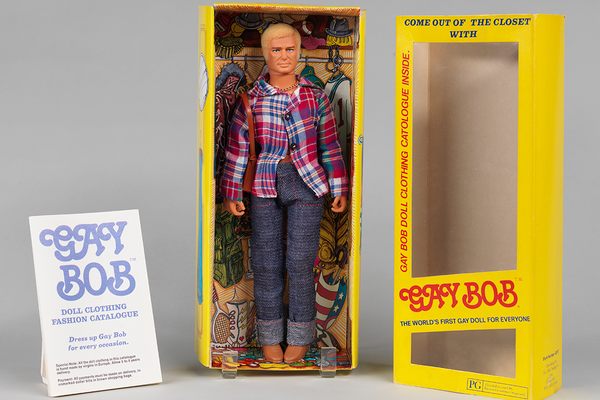Predicting the Hottest Toys of the Year is Not All Fun and Games
There’s a science to plaything prognostication.

Ever since the insane fervor surrounding Cabbage Patch Kids in the 1980s, or the Tickle Me Elmo doll in 1996, trying to predict what the hot toy of each holiday season is going to be has become an annual ritual for consumers and reviewers alike.
But how do the prognosticators of childhood delights even go about figuring out what will become the most sought after item of the year?To find out how it’s done, we talked to editor-in-chief of The Toy Insider, Jackie Breyer, who has been reporting on the toy industry for more than 14 years. Turns out it isn’t magic or marketing, but more about how fun and educational a toy might actually be.
“We’re not just looking at what are the hot toys, we’re also looking at what are the ‘right’ toys,” Breyer says. “You know, what’ll be fun, what’ll fit varying skill sets and all different kinds of kids.”
Different reviewers have their own methods for choosing which toys they are going to augur for the Christmas season, but for The Toy Insider, which releases a handful of lists of the best toys of the year, there are specific criteria.
One of the first things they consider is play value, which is how much use is a toy going to get compared to how much it costs. Which isn’t to say that a toy needs to become a family heirloom to be considered. “Some one-trick-pony type of toys are a lot of fun and still worth the money for that novelty,” says Breyer.
Next, they take originality into consideration. “There’s hundreds of toys out there and it’s important to give your kids unique toys to keep them busy and engaged,” says Breyer. Lots of toys mimic the play patterns of existing or older toys, but they need to bring something new to the field. That can be a twist on an existing toy, or a wholly new concept, like one of this year’s hot games, Speak Out, which involves trying to speak through a mouthguard.
But it’s not all just fun and games. Breyer says that they also consider what kind of skill-building a toy can provide to a child, and this doesn’t necessarily mean it has to be an outwardly educational toy. While many toys are specifically designed to simultaneously teach and entertain, a good toy, or even a game like Dungeons & Dragons, can teach subtler lessons. Role play can teach kids how to interact with people, and games that incorporate puzzles can reinforce problem solving. “Anything that contributes to a kid’s development. Maybe it teaches a lesson of some kind. Maybe it improves emotional intelligence,” says Breyer.

There is also product integrity, which refers to whether a toy lives up to its advertised promises, and whether it’s actually a quality product. Reviewers will consider whether the materials are cheap and breakable, for instance, and whether the toy can do everything it is shown to do in its marketing. In the ’90s, commercials for the board game Guess Who? showed the characters on the game cards moving and talking. In reality, they did neither. Product integrity: compromised.
Then finally, there is that ineffable “fun factor.” It might be hard to quantify, but you know a fun toy when you get your hands on one. “They need to be engaging, exciting, really just fun,” says Breyer. “Did we laugh, or did we smile, or did we laugh while playing with it, and do we think kids will do the same?”
While all of these things are taken into consideration when looking at a year’s worth of buzzworthy toys, some might see such picks as little more than advertising for big toy companies. Breyer doesn’t deny that marketing does play a small role in their choices, “There are many toy manufacturers who have great PR and marketing teams. They make sure that we’re aware of their products,” she says. “If you’re manufacturing a product and not telling anybody about it, it’s not going to be as well known.”
The Toy Insider has already released its lists of popular toys for 2016, and they show many of the popular trends for this year. STEM (Science, Technology, Engineering, and Mathematics) toys are encouragingly popular. Specifically, toys designed to teach children computer coding seem to be taking off across the age spectrum, with one of the hottest toys of the year looking to be Fisher-Price’s Code-A-Pillar, which teaches kids aged three to six basic concepts about coding with a programmable caterpillar. Other hits include robot pets like CHiP the Robot Dog, and the Zoomer Chimp, which is a robo-monkey with realistic movement.
But maybe this season’s true successor to the Tickle Me Elmo is a new toy known as a Hatchimal, which features a robotic baby animal breaking out of an egg. Of course, Breyer saw this coming. “We saw Hatchimals for the first time at New York Toy Fair in February this year,” she says. “As soon as we saw it, we all just looked at each other and said, ‘Whoa. Kids are going to love this.’ You just know. It’s got that wow factor.”








Follow us on Twitter to get the latest on the world's hidden wonders.
Like us on Facebook to get the latest on the world's hidden wonders.
Follow us on Twitter Like us on Facebook